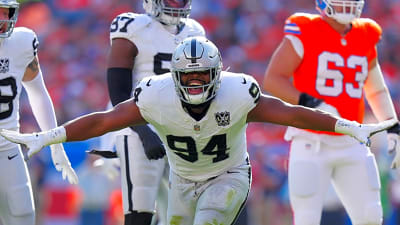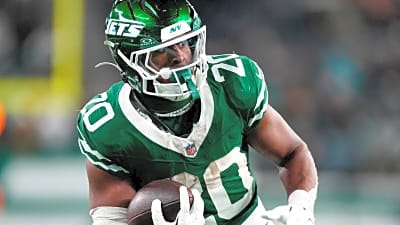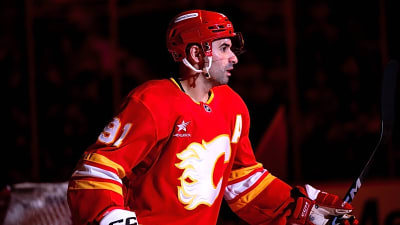In 1996, WCW became the hottest wrestling promotion in the world, overtaking WWE due to Ted Turner signing Vince McMahon's biggest stars. This led to Hulk Hogan turning heel and forming the nWo with Kevin Nash and Scott Hall at that July's Bash at the Beach pay-per-view. WWE was the cartoony company, but WCW was cool and edgy, so with that in mind, Eric Bischoff created a new pay-per-view called Road Wild (first called Hog Wild), which became an annual show starting in August 1996.
Road Wild was different because, not only was it held outdoors, but it was in front of 5,000 bikers at the Sturgis Motorcycle Rally in Sturgis, South Dakota. That may have sounded unique on paper, but Road Wild ended up being a complete mess every year.
The History Of WCW Road Wild
The WCW PPV Was Held Four Times In Sturgis
- Hog Wild was the first WCW pay-per-view after the nWo was created.
- Hulk Hogan main evented every Road Wild.
- Jay Leno was in a WCW Road Wild match, teaming with DDP against Hogan and Bischoff.
The first Road Wild, Hog Wild, was a historic one, because it was WWE's first pay-per-view after Hogan's heel turn, but having such a major event happen in front of a few thousand bikers who weren't even wrestling fans felt like a letdown. There were a whopping 16 matches at the inaugural show, but many of them only lasted a few minutes. It ended with Hollywood Hogan beating The Giant to become WCW World Heavyweight Champion. In 1997, the card was wisely cut in half, and this time had Lex Luger as the champ, only to lose the belt to Hogan.
1998's show is the most famous but also the most bizarre because of the main event, which saw Hollywood Hogan and Eric Bischoff taking on Diamond Dallas Page and the host of The Tonight Show, Jay Leno. Bischoff and Hogan even showed up on the NBC late night show, but with WWE taking over again in the ratings, bringing out Jay Leno to a motorcycle rally for a match, where he actually got in some offense on Hogan, felt desperate. The show came to an end in 1999, yet again with Hogan in the main event, this time beating Kevin Nash in a retirement match.
Road Wild Was Chaotic Behind The Scenes
WCW Wrestlers Weren't Happy About Doing The Show
- Bikers, who weren't wrestling fans, were given free tickets.
- Wrestlers had steel shipping containers for locker rooms.
- Wrestlers didn't put in a lot of effort at Road Wild.
Road Wild looked like a mess on TV. These bikers weren't even wrestling fans, but were just there because the tickets were for free. For them, it was a party where they could rev their bikes during matches. That took away from the bouts and made commentary hard to hear at times. There was also the heat and windy conditions to deal with. And some of those bikers, now drunk, liked to pick up rocks on the ground and throw them at the wrestlers. In a KC Vault interview, Kevin Nash said it was brutal, but:
"There's like eleven guys that drive bikes, and the boss is one of them, and all they're worried about is making this pilgrimage on their bikes to Sturgis."
Nash recalled staying with Scott Hall at a Best Western in Wyoming where the door was just a sliding glass door. At the actual events, there were no locker rooms, but steel shipping containers filled with plastic chairs and no A/C. To make matters even worse, the only bathrooms were porta potties. Nash said that wrestlers complained to Bischoff about the conditions but nothing was ever done to help. He added:
"Watch the work rate at those pay-per-views, because at that point it becomes, 'Okay, so we're going to do what the f**k you want to do, but we're sure as f**k not going to do it on more than about a f**king 2 out of 10."
Eric Bischoff Thought Road Wild Was A Success
There's Not Much Bischoff Would Have Changed
- Eric Bischoff wishes Road Wild had been held indoors.
- Bischoff thinks that Road Wild only failed because of production costs.
- Road Wild was created to build relationships with huge sponsors like Chevy and Budweiser.
Most of the matches at Road Wild were not exciting. Instead, they felt like glorified house shows, but worse, with the unhappy talent rushing through their moves with little enthusiasm so they could get to the finish as soon as possible. Still, it's not an idea that Bischoff regrets. On his 83 Weeks podcast, he said the only thing he would change would be to have Road Wild indoors because of the weather, adding:
"We almost got killed by weather one time for sure, early on in Sturgis. Like I was afraid lights were going to come down it got so bad. We had like, 60, 70 mile-an-hour winds. We had people watching the weather patterns on airline weather radar systems so that we could prepare and move people out if we had to, it got that bad." (h/t 411Mania)
However, if Road Wild was moved indoors it would have become just another show and would have taken away the atmosphere Bischoff was going for to begin with. The only way to do it was to commit to the format established. Doing so may have angered his wrestlers, who were given horrible accommodations and put in less than desirable surroundings for their matches, but Eric Bischoff refuses to accept that Road Wild was a disaster. To this day, he insists that it was a success, telling WreslteZone's Bill Pritchard that WCW needed more pay-per-views to survive, leading to one a month, but he also needed them to have more personality. He added:
"I saw how much money Dodge trucks, Chevy, Ford, Jim Beam, Coors, Budweiser, you name it—every major advertiser in America that targets men 18-49 was spending a lot of money to be associated with Sturgis from a branding perspective. And I went, ‘Wait a minute… that makes sense.’"
Bischoff did acknowledge that it failed in the end, but he said it was only because of production costs. Road Wild wasn't for WCW fans, and it certainly wasn't for the wrestlers. It didn't even feel like it for the bikers, who didn't care to be there but simply saw this wrestling show as part of their Sturgis party. Road Wild only existed to build relationships with big-name corporate sponsors. Those four pay-per-views were a strange yet forgettable part of WCW history.
More must-reads:
- Wrestling legend Hulk Hogan leaves behind a complicated legacy
- Mariners get needed power bat from Diamondbacks
- The 'Multiple 100-RBI MLB seasons' quiz
Breaking News
Trending News
Customize Your Newsletter
 +
+
Get the latest news and rumors, customized to your favorite sports and teams. Emailed daily. Always free!








